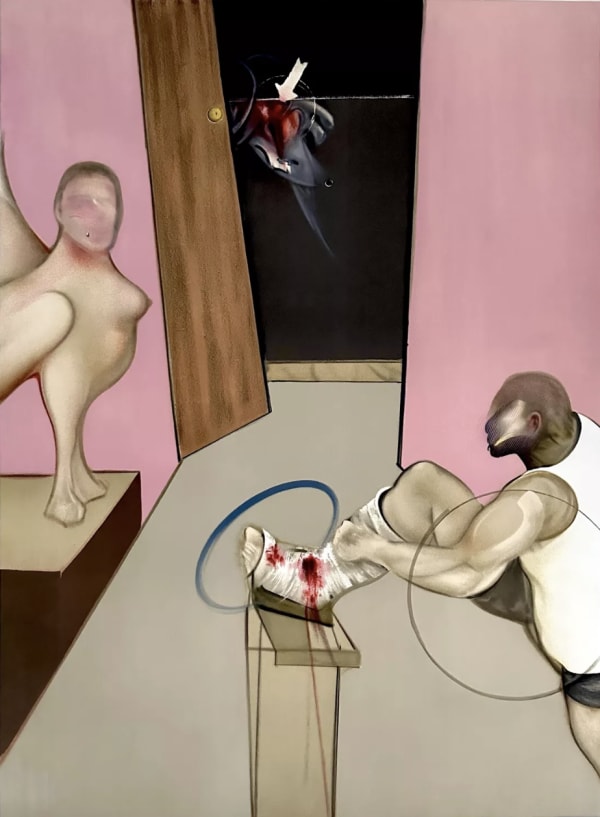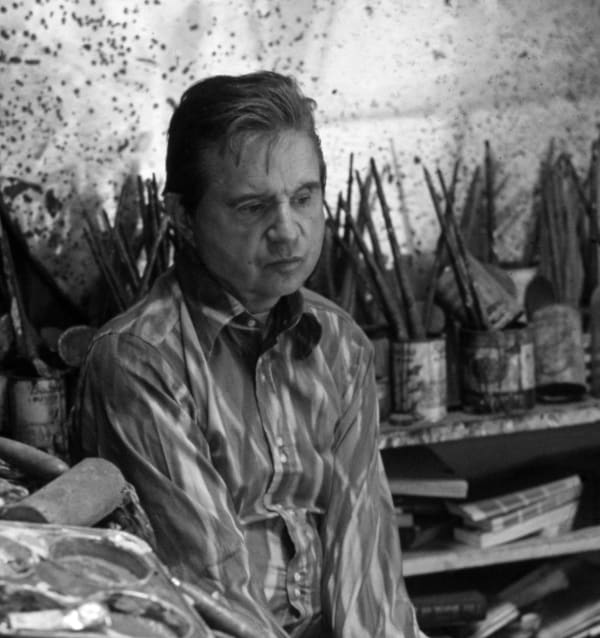-

Sand Dune, 1981
Oil, pastel, dust and dry transfer lettering on canvas
198 x 147.5cm
©The Estate of Francis Bacon, Images used for informational purposes.
-
I don’t believe art is available; it’s rare and curious and should be completely isolated
- Francis Bacon
Sand Dune (1981) is a striking example of Francis Bacon’s experimental approach to materials, showing how his late works combined painterly instinct with technical innovation. In this piece, he layered oil, pastel, dust and dry transfer lettering onto canvas, creating a surface that feels both tactile and ephemeral. The mix of mediums blurs the boundary between control and accident, the oil paint giving depth and richness to the flesh-like tones, while the pastel and dust soften and diffuse the image, leaving it with a ghostly, powdery quality.



